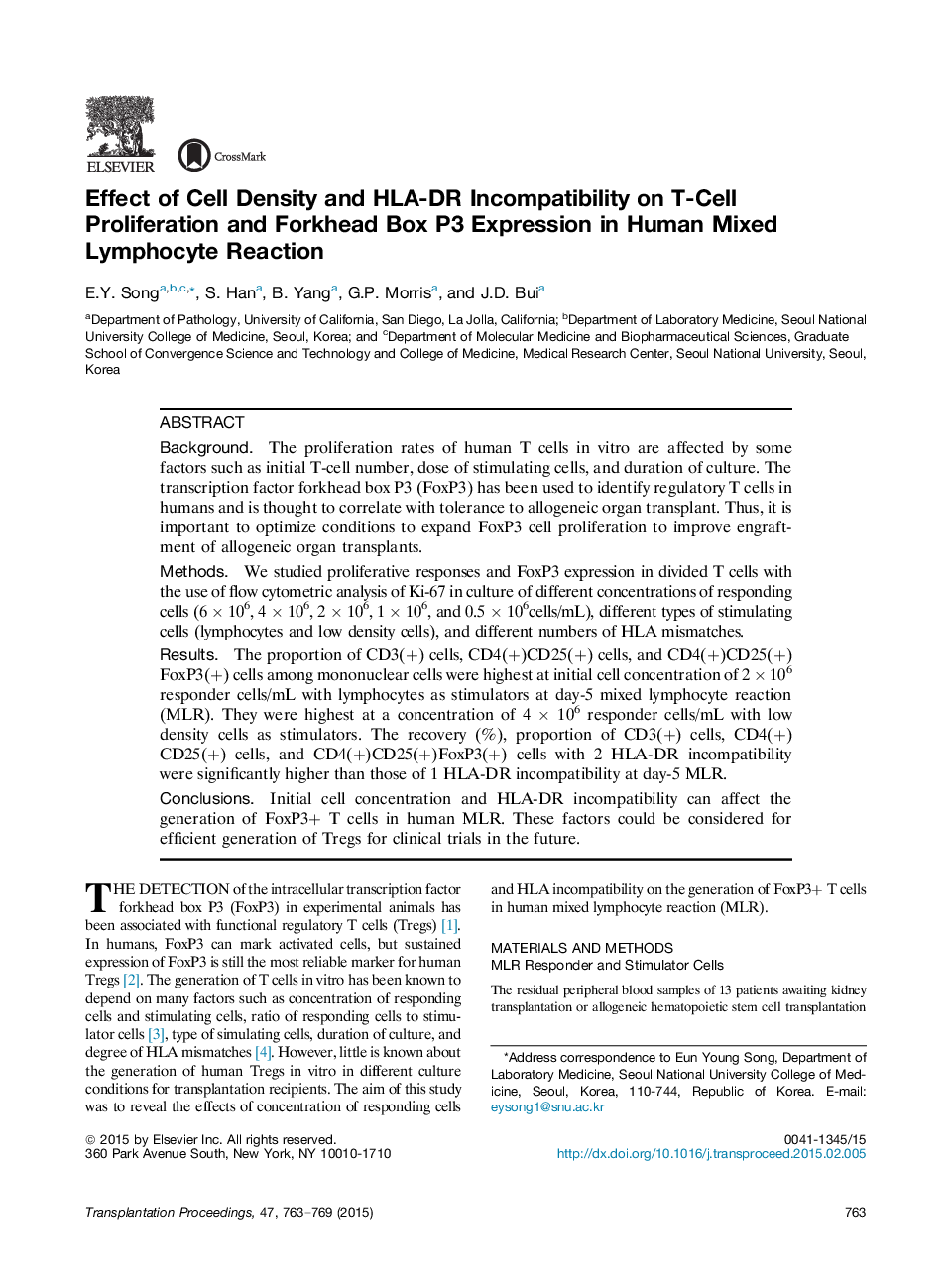| Article ID | Journal | Published Year | Pages | File Type |
|---|---|---|---|---|
| 6247881 | Transplantation Proceedings | 2015 | 7 Pages |
â¢In a standard MLR, the recovery of Tregs was highest when the starting concentration of responder cells was 2 à 106 cells/mL with the use of lymphocytes as stimulators.â¢In a standard MLR, the recovery of Tregs was highest when the starting concentration of responder cells was 4 à 106 cells/mL with the use of low-density cells as stimulators.â¢In a standard MLR, the recovery of Tregs was higher with 2 HLA-DR incompatibilities than with 1 HLA-DR incompatibility at all starting concentrations of responder cells.
BackgroundThe proliferation rates of human T cells in vitro are affected by some factors such as initial T-cell number, dose of stimulating cells, and duration of culture. The transcription factor forkhead box P3 (FoxP3) has been used to identify regulatory T cells in humans and is thought to correlate with tolerance to allogeneic organ transplant. Thus, it is important to optimize conditions to expand FoxP3 cell proliferation to improve engraftment of allogeneic organ transplants.MethodsWe studied proliferative responses and FoxP3 expression in divided T cells with the use of flow cytometric analysis of Ki-67 in culture of different concentrations of responding cells (6 à 106, 4 à 106, 2 à 106, 1 à 106, and 0.5 à 106cells/mL), different types of stimulating cells (lymphocytes and low density cells), and different numbers of HLA mismatches.ResultsThe proportion of CD3(+) cells, CD4(+)CD25(+) cells, and CD4(+)CD25(+)FoxP3(+) cells among mononuclear cells were highest at initial cell concentration of 2 à 106 responder cells/mL with lymphocytes as stimulators at day-5 mixed lymphocyte reaction (MLR). They were highest at a concentration of 4 à 106 responder cells/mL with low density cells as stimulators. The recovery (%), proportion of CD3(+) cells, CD4(+)CD25(+) cells, and CD4(+)CD25(+)FoxP3(+) cells with 2 HLA-DR incompatibility were significantly higher than those of 1 HLA-DR incompatibility at day-5 MLR.ConclusionsInitial cell concentration and HLA-DR incompatibility can affect the generation of FoxP3+ T cells in human MLR. These factors could be considered for efficient generation of Tregs for clinical trials in the future.
